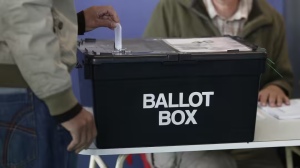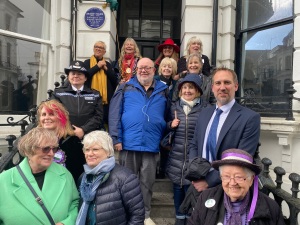(This item first appeared in the Brighton Argus on 21st February 2024)
One of the greatest cricketers of all time, the South African Mike Procter, died on Saturday at the age of 77. He is widely regarded as one of the top all-rounders ever, along with the likes of Imran Khan, Ian Botham, Garry Sobers, and Jacques Kallis. But unlike these greats, many of them his contemporaries, Procter played just seven Test matches, his international career having been cut short by the exclusion of apartheid South Africa from international sport.
All seven of his Tests were played against the mighty Australians. He took 41 wickets at an average of just 15.02 runs which, for those uneducated in these matters, is a truly phenomenal return. South Africa won six of these Tests.

One of the greatest cricketers of all time (Mike Procter, not me). Photo: Geoffrey Bowden
Denied an international career, Procter carved out a career in English County Cricket where, playing for 14 years for Gloucestershire, he came up against, and vanquished, many of the greatest of his era. Such was his part in the success of Gloucestershire at that time, locals jokingly referred to the Club as ‘Proctershire’. He said that he found that a bit embarrassing: “I never felt as if I was carrying the team, and our victories were always down to more than one individual standing up. My stats and figures sometimes stood out, but I was just happy to be part of a very successful period in its history.”
He scored 21,082 runs in first-class cricket at an average of 36.92, hitting 47 centuries, and took 1,357 wickets at an average of 19.07 runs. He became only the third batsman in the world to score six first-class centuries in six consecutive innings after C. B. Fry and Don Bradman, and he is the only South African to do so.
Perhaps his only failure in the realm of cricket was as a coach. He was the coach when South Africa first played after its sporting isolation came to an end. Like many of the greats, his transition from player to coach was not a huge success, possibly because he couldn’t always empathise with the struggles of lesser mortals who did not share his natural genius as a cricketer.
A lesser person might have become bitter that their international career was frustrated by the sporting boycott. Not Procter. He said: “What is a Test career compared to the suffering of 40 million people? Lots of people lost a great deal more in those years, and if by missing on a Test career we played a part in changing an unjust system, then that is fine by me.”
I once had a very polite argument with the late, great Test Match Special commentator, Christopher Martin-Jenkins, about politics and sport. He said that sport and politics should be kept apart. As a South African who actively opposed to apartheid, I begged to differ. I am sure Mike Procter would have disagreed as well.
After the fall of apartheid in the early 1990s, it was not uncommon to find white people who said that they had always opposed apartheid. This even included prominent members of the apartheid government! But finding evidence to support their alleged opposition proves somewhat elusive. Mike Procter was not one of these latter-day opponents. In 1971, at the start of the final game of the season, Procter and several other top players including Clive Rice, Vince van der Bijl, brothers Graeme and Peter Pollock, and Denis Lindsay, walked off the field after just one ball had been bowled. It was a protest against the government’s decision not to allow two black players to go on an upcoming tour of Australia. Procter explained that “the point of the exercise was for us as players to be seen – on the only platform we had – to be strongly against racial discrimination. I can’t say how big an impact it made, but I was proud to be associated with a group of players that understood that there were wider implications at play, all around us.”
Over the years I have read far too many books on cricket, and by too cricketers. Almost all were a disappointment with just a handful being the exception. Procter’s autobiography, ‘Caught in the Middle’ is one of those exceptions.
It is said that you should never meet a childhood hero because they are bound to be a disappointment. In 2017, at Lords Cricket Ground, I did meet Mike Procter and, in spite of it being just a brief encounter, I was not disappointed. He was warm and engaging. As a cricketer and as a humanitarian, he was an exceptional person and I mourn his passing.
 I was reading a Labour leaflet from Queens Park, most of which I agree with. There was talk of lower rents, improving education, and the lot of people experiencing a cost-of-living crisis (“the lot of the poorer inhabitants” the leaflet said). There was a focus on unemployment, housing schemes, empty homes, and transport.
I was reading a Labour leaflet from Queens Park, most of which I agree with. There was talk of lower rents, improving education, and the lot of people experiencing a cost-of-living crisis (“the lot of the poorer inhabitants” the leaflet said). There was a focus on unemployment, housing schemes, empty homes, and transport.








